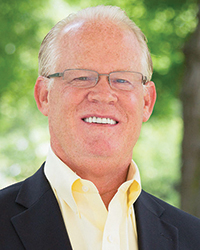How to finance solar energy for your real estate - by Craig Huntley

Solect Energy
Many of the financing methods applicable to real estate and property management projects also apply to solar energy projects. But in addition, as the solar industry has matured, new and innovative financing instruments have been created that enable businesses to improve their bottom lines without significant investment. In fact, a number of options require no upfront capital whatsoever.
As typical throughout the corporate world, a cash investment in solar, using existing capital or a combination of debt and equity, delivers the highest Return on Investment (ROI). Purchasers own the solar and benefit directly from a generous 26% tax credit and accelerated depreciation, plus “green income.” But loan financing, operating leases, capital leases and Power Purchase Agreements also deliver significant benefits, which is why many of Solect Energy’s 500-plus project owners elected to deploy one of these financing solutions. Here’s a rundown of the most popular solar financing instruments and how they impact a company’s investment strategy, cash flow and accounts.
Loan Financing: Business owners seeking optimal ROI and the financial and tax benefits of solar ownership, while not tying up all of their own capital, should consider loan financing through one of the many lending organizations active in solar, or the company’s own bank. Typically, the bank requires 20% to 40% down and finances the rest with a term loan.
These property owners receive all the benefits of direct purchase, while being responsible for monthly loan payments and any interest associated with the loan for the solar array. Frequently, the savings from the solar array are more than adequate to cover the loan repayment.
Operating Lease: Developers and facilities managers who prefer not to expend capital, or can’t realize the full value of the tax credit and accelerated depreciation, often look to lease products.
With an operating lease, the lessor/bank or financing company provides 100% of the capital and the lessee has the option to purchase the system based upon the Fair Market Value of the system at the end of the Operating Lease. The lessee or “host” of the system essentially rents it from the lessor/bank or financing company and uses the electricity it produces. This is not unlike a monthly lease or rent payment for office space or an apartment; the payment amount is fixed for the duration of the lease term.
The tax credits and accelerated depreciation go to the leasing company which allows for a substantially reduced payment during the term of the lease. The lease term ranges from five to ten years.
The host realizes electricity savings from replacing higher priced utility-provided power with cost-effective solar power. Depending on the state, the host may also receive green income payments under programs including SMART in Massachusetts and ZRECs in Connecticut.
This arrangement often creates positive cash flow from the start, if the monthly electricity savings and green income amount to more than the lease payment. Those payments are accounted for as operating expenses and thus remain off the balance sheet.
Capital Lease: The solar capital lease is a variation of the operating lease, and is ideal for business owners with the same investment profile and tax appetite. But instead of the host “renting” the solar energy system, the lease is structured as if the host owns the system.
The solar developer or bank still provides 100 % of project financing. But the monthly lease payment is higher than with an operating lease because the system owner/host receives the tax benefits directly.
The capital lease is referred to as a conditional sale; at lease expiration, the title transfers to the host for $1.00. With a capital lease, the solar is accounted for as an asset.
Power Purchase Agreement: Like the lease options, little to no upfront investment of capital is required with a Power Purchase Agreement (PPA). Typically, the solar developer or one of its financial partners owns and maintains the system at no cost to the host, while potentially generating lease income for leasing the area in which the array is operating. Rather than making set monthly payments, the host purchases all of the energy produced by the solar, at a fixed, discounted rate well below the utility rate.
The PPA appeals most to businesses seeking significant expense reductions with the least amount of responsibility for the solar energy investment. The electricity is accounted for as an expense to the receiving entity and the “roof rental” is recorded as income.
Craig Huntley is the chief development officer for Solect Energy, Hopkinton, Mass.
Bridgeport implements energy efficiency plan with utility partners and regional business council





